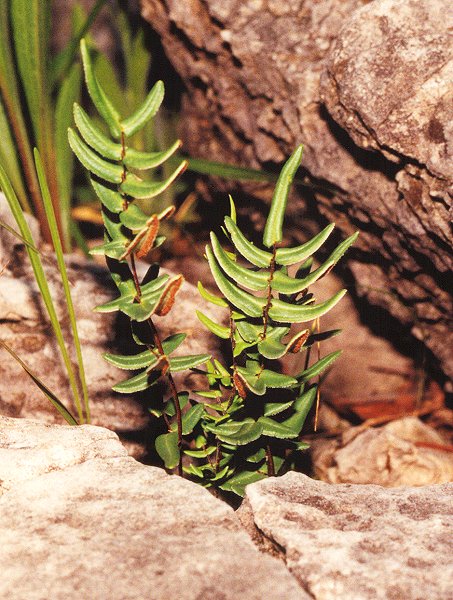Pellaea atropurpurea (L.) Link
Purple Cliff Brake

Native
CC = 7
CW = 5
MOC = 74
© DETenaglia
Pellaea atropurpurea (L.) LinkPurple Cliff Brake | |
 |
Native CC = 7 CW = 5 MOC = 74 |
© DETenaglia |
|
Family - Pteridaceae Stems - Rhizomes compact, scaly. The scales ferruginous, linear. Leaves - Leaves to 50cm long but often seen much shorter. Rachis deep purplish-brown, densely pubescent (mostly at the base). The hairs ferruginous and curling. Base of hairs often pustulate. Pinnae opposite, with petiolules (except for terminal pinna), the lowest often 1-2 times divided, +/-3cm long, hastate or linear to oblong (depending on fertility), deep green and glabrous adaxially, light green-blue abaxially with a few hairs on the midrib. Margins distinctly revolute and creating a false indusium for the sporangia. Sporangia many, marginal, brown, -.2mm in diameter when coiled, with +/-20(32) spores.
Flowering - Spores produced June - September. Habitat - Crevices of limestone and dolomite outcrops, bluffs, boulders, and sinkholes. Sometimes in dry soils adjacent to dolomite glades. Origin - Native to U.S. Other info. - This small species can be found scattered throughout much of Missouri but is most common in the Ozark region of the state. The plant is almost always found growing from rock crevices. This is an easy species to ID because of its habitat and its distinctive look. Nothing else in our flora resembles it. The pinnae of the fertile leaves are much more long and thin than those of the sterile leaves. Photographs taken in Eminence, MO., 5-30-01 and 9-28-03. |